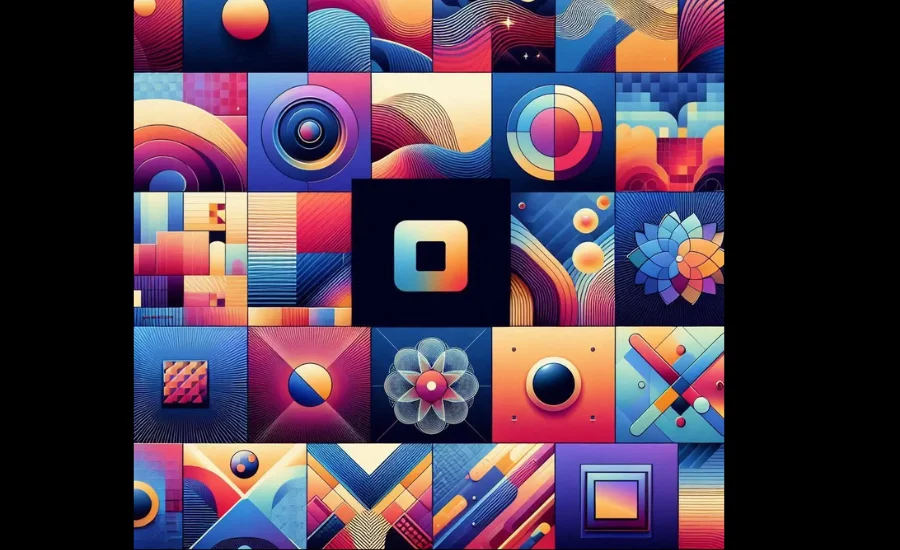Design:5exwzo_yaxi= Background: 10 Mind-Blowing Ideas to Revolutionize Your Aesthetics
Design:5exwzo_yaxi= Backgrounds play a crucial role in shaping the visual narrative of any digital project. They create an engaging atmosphere where typography, icons, and interactive features can flourish. Thoughtfully designed backgrounds not only elevate the overall user experience (UX) and user interface (UI) but also infuse your project with depth, significance, and aesthetic appeal. A well-crafted background is essential for guiding user interactions, capturing attention, and clearly conveying your brand’s message.
In the realm of Design:5exwzo_yaxi= Backgrounds, the term refers to the foundational element that supports the content displayed on a page. A compelling background enhances readability and boosts user engagement, ultimately improving the overall user experience. Whether in UI/UX design or graphic design, the strategic use of backgrounds is vital for creating visual coherence, evoking emotions, and providing context for the information presented. Effective Design:5exwzo_yaxi= Backgrounds help define a brand’s visual identity while significantly influencing user behavior.
In both UI/UX and graphic design, Design:5exwzo_yaxi= Backgrounds serve as the essential foundation upon which all other design elements are constructed. They create a user interface that is welcoming, intuitive, and easy to navigate. An ideal background complements UI components without overwhelming them, striking a balance between visual appeal and functional effectiveness. Additionally, well-designed backgrounds play a vital role in establishing a visual hierarchy, ensuring that key content and calls to action (CTAs) are prominently displayed.
Understanding Design:5exwzo_yaxi= Backgrounds
In the realm of digital design, Design:5exwzo_yaxi= Backgrounds serve as foundational elements that significantly impact how users perceive and interact with content. They set the stage for the entire user experience, influencing everything from emotional engagement to content readability. An effective background goes beyond aesthetics; it communicates brand identity and fosters a connection with the audience. This article delves into various aspects of Design:5exwzo_yaxi= Backgrounds, including color theory, texture, imagery, and current trends.
The Significance of Color Theory
Color is an essential component of Design:5exwzo_yaxi= Backgrounds that shapes user perception and emotional response. Each color can evoke specific feelings and associations, making color choice crucial for effective design. A well-chosen color palette can enhance readability, attract attention, and reinforce the brand’s message. For example, warm colors such as red and orange can create a sense of excitement and urgency, while cool tones like blue and green promote calmness and tranquility.
Understanding color theory is vital for designers. It encompasses the relationships between colors, including complementary, analogous, and triadic schemes. Using these relationships wisely can help create harmonious backgrounds that not only support but also enhance the primary content. By integrating color theory into Design:5exwzo_yaxi= Backgrounds, designers can create visually engaging experiences that resonate deeply with users.
The Philosophy Behind Design:5exwzo_yaxi= Backgrounds
At its core, Design:5exwzo_yaxi= Backgrounds is about more than just aesthetics; it embodies a philosophy that prioritizes user experience and emotional connection. This design style emphasizes:
- User-Centric Design: Understanding the audience’s needs is paramount. Designers should create backgrounds that not only enhance visual appeal but also support usability and accessibility.
- Brand Identity: Effective backgrounds should reflect the brand’s personality and values. Every choice—from color to texture—contributes to a cohesive brand narrative that resonates with users.
- Emotional Engagement: Backgrounds can evoke emotions and create an atmosphere that aligns with the content. A well-designed background can trigger nostalgia, excitement, or calmness, enhancing the overall experience.
Incorporating Textures and Patterns
Textures and patterns add layers of complexity to Design:5exwzo_yaxi= Backgrounds. These elements can introduce a tactile quality that enriches the user experience. From subtle grainy textures to bold geometric patterns, the right choice can significantly enhance the visual narrative. Textures create depth, making flat designs feel more immersive and inviting.
When using textures, it’s essential to strike a balance. Overly intricate patterns can distract users, while too much flatness can render designs lifeless. A well-designed background may incorporate subtle textures that complement the overall theme without overwhelming the primary elements. This approach encourages user interaction, allowing the design to breathe while maintaining visual interest.
Key Components of Design:5exwzo_yaxi= Backgrounds

Color Dynamics
The dynamic use of color is a cornerstone of Design:5exwzo_yaxi= Backgrounds. The relationship between colors affects user perceptions and behaviors. Here are some specific elements to consider:
- Color Psychology: Different colors evoke different emotions. For instance, green often represents growth and tranquility, while red can signify energy or urgency. Understanding these associations allows designers to craft backgrounds that elicit the desired emotional responses.
- Color Contrast: Effective background design should ensure sufficient contrast between the background and the foreground content. High contrast enhances readability, while low contrast can create a more subdued effect, ideal for less demanding content.
Texture and Depth
Textures are essential in creating a rich visual experience in Design:5exwzo_yaxi= Backgrounds. Here’s how texture plays a role:
- Tactile Quality: Textures can create a sense of touch in visual design. For example, a background mimicking fabric or paper can evoke warmth and familiarity.
- Visual Hierarchy: Different textures can establish visual hierarchy, guiding the viewer’s eye toward specific elements. A textured background can provide depth, making key content stand out.
Imagery and Visual Elements
Images and graphics significantly enhance Design:5exwzo_yaxi= Backgrounds. They can provide context and engage users effectively.
- Contextual Relevance: Imagery should be relevant to the content and context. A background featuring a cityscape can enhance a tech company’s website, while nature imagery might be more suitable for a wellness brand.
- Low-quality images can detract from the overall design and user experience.
The Power of Imagery and Graphics
High-quality imagery is another key aspect of effective Design:5exwzo_yaxi= Backgrounds. Images can convey emotions and tell stories, making them powerful tools in the designer’s arsenal. Whether through photography, illustrations, or graphics, integrating visuals into backgrounds can help set the tone for the entire project.
Imagery should be contextually relevant and of high quality to ensure a professional look. For instance, a website focused on travel may use stunning landscapes as backgrounds to evoke wanderlust, while a corporate site might favor abstract graphics to convey professionalism. Selecting the right imagery can transform a simple background into a compelling visual experience that enhances user engagement.
Exploring Types of Backgrounds
When creating Design:5exwzo_yaxi= Backgrounds, designers can choose from various styles to best suit their objectives. Each type offers unique advantages and visual impacts, making them suitable for different projects.
Solid Color Backgrounds: These backgrounds emphasize simplicity and clarity. By stripping away distractions, they direct the user’s focus to the content. Solid color backgrounds are often used in professional settings, providing a clean aesthetic that facilitates easy readability.
Gradient Backgrounds: Gradients bring a modern flair to designs, blending colors to create depth and dimension. They are particularly effective in drawing attention and adding a dynamic feel to the background. This style is prevalent in contemporary web and app designs, where it can lend a polished and professional appearance.
Patterned Backgrounds: Utilizing repetitive elements, patterned backgrounds create visual interest without overpowering the main content. They can be effective in establishing a cohesive look that engages users while maintaining focus on the key messages.
Image-Based Backgrounds: These backgrounds leverage photography to create an immersive scene that resonates with users. High-quality images can evoke emotions and set the mood for the content, making them especially powerful in hero sections of websites or landing pages.
Video Backgrounds: A growing trend, video backgrounds introduce movement and interactivity, enhancing user engagement. They can convey complex ideas quickly and effectively but should be optimized to ensure quick loading times, especially on mobile devices.
Tools for Creating Effective Backgrounds

Designing effective Design:5exwzo_yaxi= Backgrounds requires the right tools. Various software options cater to different skill levels and design needs.
Adobe Photoshop: Renowned for its advanced editing capabilities, Photoshop allows designers to create intricate and complex backgrounds. With its extensive range of features, designers can manipulate textures, colors, and images to achieve their desired aesthetic.
Canva: This user-friendly platform democratizes design, making it accessible for individuals without technical expertise. Canva provides numerous templates and customization options, making it easy for anyone to create stunning backgrounds.
Figma: Ideal for UI/UX designers, Figma excels in collaborative projects. Its intuitive interface facilitates real-time collaboration, enabling teams to create cohesive and visually appealing backgrounds for web and mobile applications.
Sketch: Popular among web designers, Sketch is well-suited for creating functional and stylish backgrounds. Its vector-based capabilities allow for scalable designs, making it a preferred choice for adaptable backgrounds.
Trends Shaping Design:5exwzo_yaxi= Backgrounds
Micro-interactions in backgrounds can enhance user engagement by providing feedback or animation when users interact with elements. Subtle animations, such as gradients or moving patterns, can create a dynamic user experience. However, they should be used sparingly to avoid overwhelming users.
With growing awareness of sustainability, backgrounds that reflect eco-friendly practices are becoming popular. Incorporating natural textures and colors can resonate with eco-conscious audiences, promoting a sense of harmony with nature.
As awareness of diversity increases, backgrounds that reflect inclusivity can foster a welcoming environment.
Using backgrounds that showcase diverse cultures and lifestyles can help resonate with a broader audience, promoting inclusivity and representation.
Best Practices for Designing Backgrounds
To ensure the effectiveness of Design:5exwzo_yaxi= Backgrounds, adhering to best practices is essential.
Visual Harmony: Striking a balance between the background and the main content is crucial for optimal user experience. A well-designed background should complement the foreground, enhancing readability and engagement.
Responsiveness: In today’s digital landscape, backgrounds must be adaptable across various devices and screen sizes. Responsive designs maintain visual appeal and clarity, ensuring users have a consistent experience regardless of the device used.
User Testing: Once backgrounds are designed, testing them in real-world scenarios is vital. User feedback can reveal insights into how effectively backgrounds engage users and support usability. Iterating on design based on this feedback ensures continuous improvement.
Current Trends in Background Design for 2024
As we look ahead, several trends in Design:5exwzo_yaxi= Backgrounds are set to shape the future of digital design.
Neumorphism: This design trend blends elements of flat design and skeuomorphism, creating soft, extruded shapes with subtle shadows. Neumorphic backgrounds offer a modern, tactile aesthetic, appealing to users seeking a contemporary look.
Dark Mode Backgrounds: With the growing popularity of dark mode on devices, backgrounds optimized for this setting have become essential. Dark mode backgrounds provide a sleek appearance while reducing eye strain, necessitating careful color selection for effective user experience.
3D Elements: The incorporation of 3D design into backgrounds is gaining traction. By adding depth and realism, 3D backgrounds create immersive experiences that captivate users, making them particularly suitable for tech-themed projects.
Minimalism with Bold Typography: Minimalist backgrounds featuring bold typography focus on clarity and simplicity. This trend emphasizes strong text elements against clean backdrops, ensuring that content stands out prominently.
Defining Design:5exwzo_yaxi= Backgrounds
The term Design:5exwzo_yaxi= Background encapsulates a contemporary design approach that merges intricate patterns, textures, and minimalist visuals to create functional and aesthetically pleasing backgrounds. These designs are dynamic, allowing for adaptability across various digital platforms, including websites, mobile apps, and social media.
This strategy emphasizes creating harmony between the background and main content, ensuring the background supports rather than overwhelms. Achieving this balance involves thoughtful application of color theory, texture, and simplicity, allowing for engaging visual designs that enhance user experience.
Core Elements of Design:5exwzo_yaxi= Backgrounds

Minimalism: A hallmark of Design:5exwzo_yaxi= Backgrounds, minimalism focuses on clean lines and subtle details. This approach fosters clarity, ensuring that the main content remains the focal point.
Textural Depth: Utilizing textures enhances the tactile quality of backgrounds, adding depth and visual interest. These textures can mimic real-world materials, providing a sense of richness to digital designs.
Dynamic and Responsive Elements: A notable feature of Design:5exwzo_yaxi= Backgrounds is their adaptability. Backgrounds can change based on user interactions or settings, enhancing engagement and providing personalized experiences.
Color Theory and Emotional Impact: Understanding color theory is vital for creating effective backgrounds. Designers can select palettes that resonate with the intended mood of the content, influencing user interactions.
Versatile Applications of Design:5exwzo_yaxi= Backgrounds
Web Design: Websites utilizing Design:5exwzo_yaxi= Backgrounds create visually stimulating experiences. Intricate textures and dynamic elements can enhance landing pages and banners while maintaining focus on the main content.
Mobile Applications: Backgrounds in mobile applications can significantly enhance user interaction. Responsive and interactive designs adapt to user activities, providing immersive experiences that keep users engaged.
Branding and Print Media: Brands can leverage Design:5exwzo_yaxi= Backgrounds in print materials, including business cards and brochures. The sophisticated texture and aesthetic appeal contribute to memorable brand identities.
Essential Considerations for Using Design:5exwzo_yaxi= Backgrounds

Balance and Contrast: Achieving a harmonious relationship between background and content is crucial. The background should enhance readability and visual appeal without competing for attention.
Maintain Simplicity: While creativity is encouraged, it’s vital to avoid overcomplicating backgrounds. Simplicity ensures that designs do not distract from the main content.
Adaptability: Design choices must consider various devices and screen sizes. Backgrounds should maintain their impact and usability across platforms.
A/B Testing: Implementing A/B testing can provide valuable insights into user preferences and engagement levels. This approach allows designers to refine backgrounds based on real user interactions.
Final Words
In the digital landscape, Design:5exwzo_yaxi= backgrounds are fundamental in shaping user experiences. They create an engaging environment where content, typography, and interactive features thrive. A thoughtfully designed background enhances readability, captures attention, and communicates a brand’s identity effectively.
Color theory plays a crucial role, as different hues evoke specific emotions, making strategic color choices essential for enhancing user engagement. Incorporating textures and patterns adds depth, transforming flat designs into immersive experiences that invite interaction. The balance between visual appeal and functionality ensures that key content stands out, guiding user behavior.
As trends like minimalism, dark mode, and 3D elements emerge, the versatility of Design:5exwzo_yaxi= backgrounds continues to evolve. These backgrounds are adaptable across platforms, enhancing the visual narrative while maintaining clarity. By prioritizing user-centric design and emotional engagement, designers can craft compelling backgrounds that resonate with audiences, fostering a deeper connection and improving overall usability. Embrace the potential of Design:5exwzo_yaxi= backgrounds to elevate your digital projects.
Transform your digital landscape with Thrill Rise, where expertly crafted Design:5exwzo_yaxi= Backgrounds elevate your project’s visual narrative and captivate your audience.






